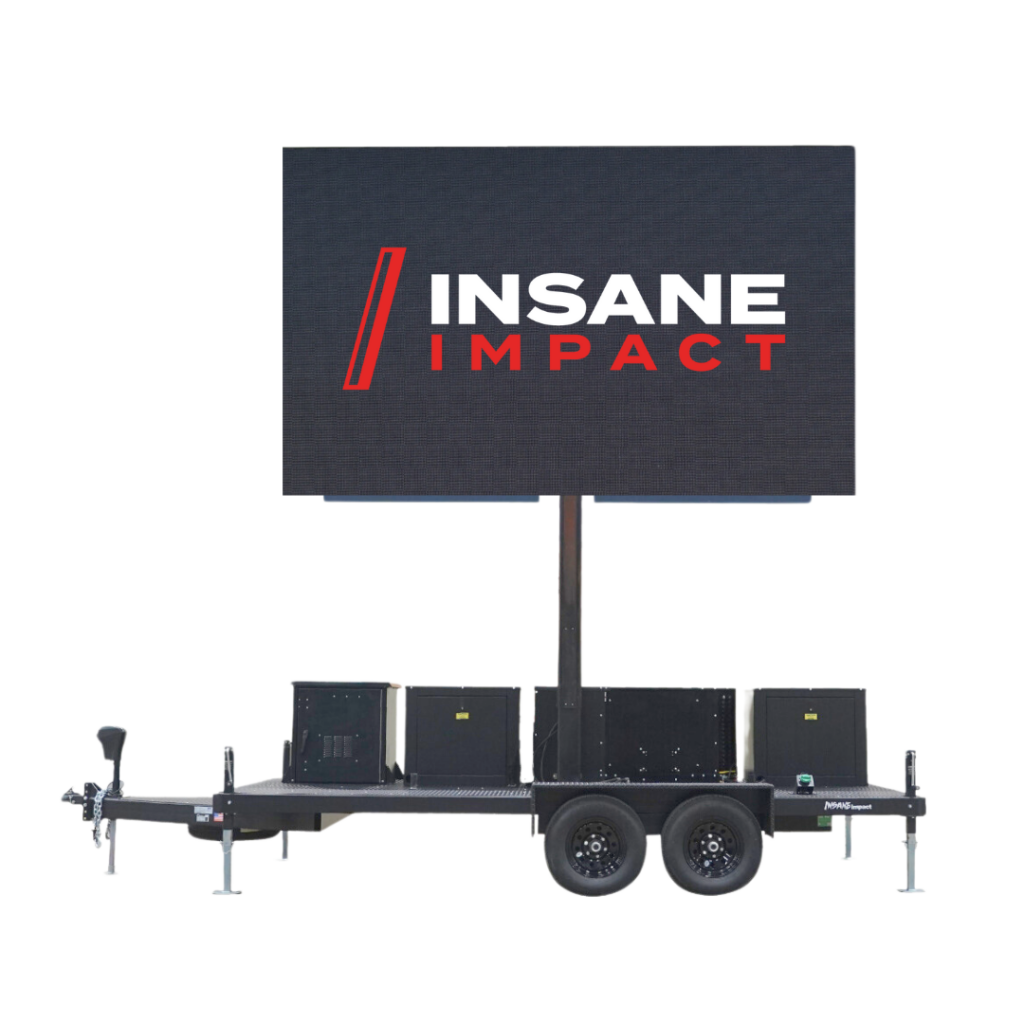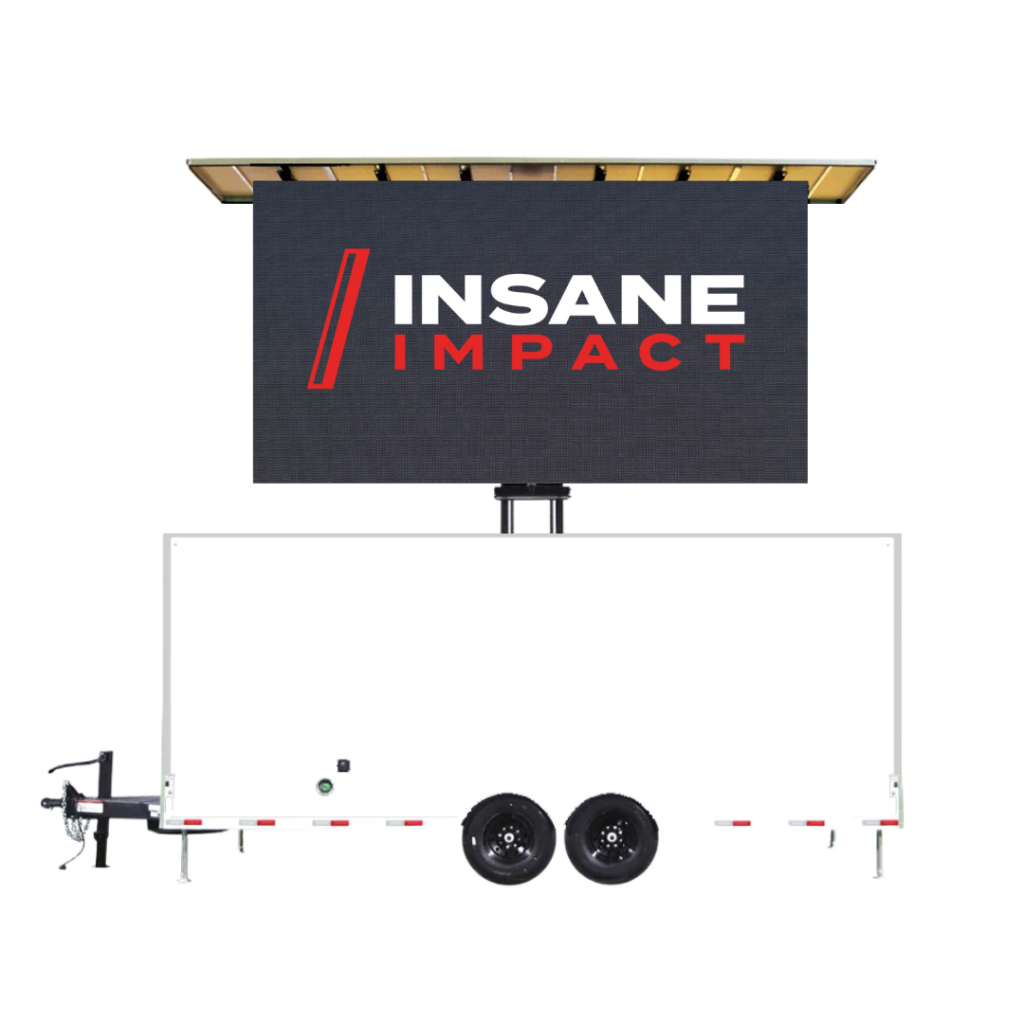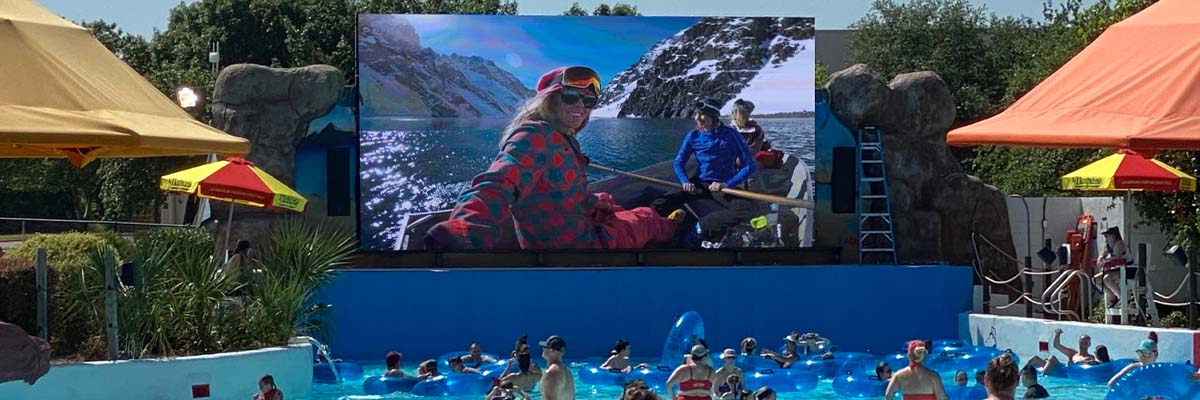Outdoor LED screens have a wide array of applications and are becoming more prevalent each day with advancements in technology.
Whether you are interested in purchasing one or would like to learn more about these attention-grabbing displays, here is everything you need to know.
What is an outdoor LED screen?
The term outdoor LED screen is typically referring to a large outdoor video wall that utilizes LED technology. In contrast to a single panel display such as an LED TV or monitor, video walls are constructed by linking multiple panels together, allowing for large sizes and custom shapes.
These panels utilize a very high brightness for outdoor visibility and durable hardware for resistance to nature’s elements. Large sizes accommodate far away viewing distances by many people at once. Applications include digital billboards, monument signs, stadium jumbotrons, rental, outdoor LED signage & more.
Technical considerations
BRIGHTNESS
LED is the brightest display technology, making it the clear choice for outdoor solutions. Video wall brightness is measured in nits. The higher nit rating, the higher the brightness. Outdoor panels require a minimum brightness rating of 5,000 nits to allow for visibility under direct sunlight, and can reach as high as 10,000+ nits.
OUTDOOR DURABILITY
An LED panel’s resistance to nature’s elements is measured with its IP rating. An IP rating (short for ingress protection rating) is written as “IP” followed by 2 digits. The first digit indicates the panel’s protection against solids (such as dirt and dust), and the second indicates protection against liquid (such as rain).
Outdoor video walls require a rating of IP65. IP65 indicates full protection against solids and high protection against liquids at low pressure.
PIXEL DENSITY
A pixel is the smallest addressable element on a raster image. They are those little dots that you see on the LED panel. Thousands, sometimes millions of these dots combine to form one large seamless image.
Pixel pitch is the unit of measurement for how tightly packed together these pixels are. Pixel pitch is the distance, in millimeters, between the center of 2 pixels on an LED panel. Pixel pitch is often written as P(number). For example, a P10 screen would have a pitch of 10mm, meaning that the pixels are spaced 10 millimeters apart from each other.
Pixel pitch is an important factor to consider in relation to viewing distances. Lower pitches (higher pixel densities) are required for closer viewing distances. Screens intended for far-away viewing, such as billboards, are better served with a higher pitch. Outdoor video walls tend to have a higher pixel pitch than indoor ones, since they are usually for viewing from farther away viewing distances.
SMD VS. DIP
A pixel is comprised of the colors red, green, and blue. With DIP, these 3 colors are separated, and with SMD, the colors are soldered together.
SMD LED tends to offer higher image detail and smoother color accuracy whereas DIP LED is brighter and more durable. Both are popular technologies for outdoor applications.
SIZE
Video wall panels are usually between 1 and 4 square meters in size. The bigger the screen, the more panels required to form the display. Farther away viewing distances require larger sizes. When determining the size of your video wall, it is important to factor in viewing distances, budget, and the look and feel that you would like to capture.
ASPECT RATIO
The aspect ratio of a screen is a measurement of a screen’s proportion of its width to its height. A screen with a 1:1 or square aspect ratio would have a width equal to its height. A 2:1 aspect ratio screen would have a width of double its height, and so-on. The standard aspect ratio of most video is 16:9.

CONSTRUCTION
Some popular construction methods for outdoor video walls include:
- Ground supported – The screen sits on the ground.
- Wall mounted – The screen is mounted to the wall.
- Flown – The screen is hung from a structure above it.
- Pole mounted – The screen is mounted from a vertical pole.
- Truss supported – The screen is mounted with aluminum truss equipment.
- Mobile – The screen is mounted onto a truck or trailer.

What do outdoor LED screens cost?
Video wall pricing can vary greatly depending on the size, construction requirements, and technical specifications. However, an estimated price range for purchasing an outdoor LED screen would be anywhere between $40,000 and $400,000.
Pixel pitch and size are the 2 biggest determining factors on what your screen will cost. The larger the screen and the lower the pitch, the more expensive the screen.
The price for a 1 day LED screen rental can range from $2,500 to $15,000. Consecutive days are usually less expensive than the first day. A small mobile screen would be in the lower end of the range, and a large modular screen would be in the higher end. The rental price usually includes setup and operation of the screen as well.
How to get started
The first step to your next outdoor LED screen project is to contact an experienced provider. LED installation and rental are projects that require years of experience from professionals who understand the technology and logistics associated with a successful activation. They will listen to your goals, requirement, and budget to help you plan for the most effective solution.
Insane Impact has the product and expertise to exceed your expectations at the right price. After installing your video wall, our job is far from done. Receive around the clock support from our team with an industry leading spare parts package and warranty.
If you are ready to impact your audience with state of the art display technology, fill out the form to contact an LED expert.







